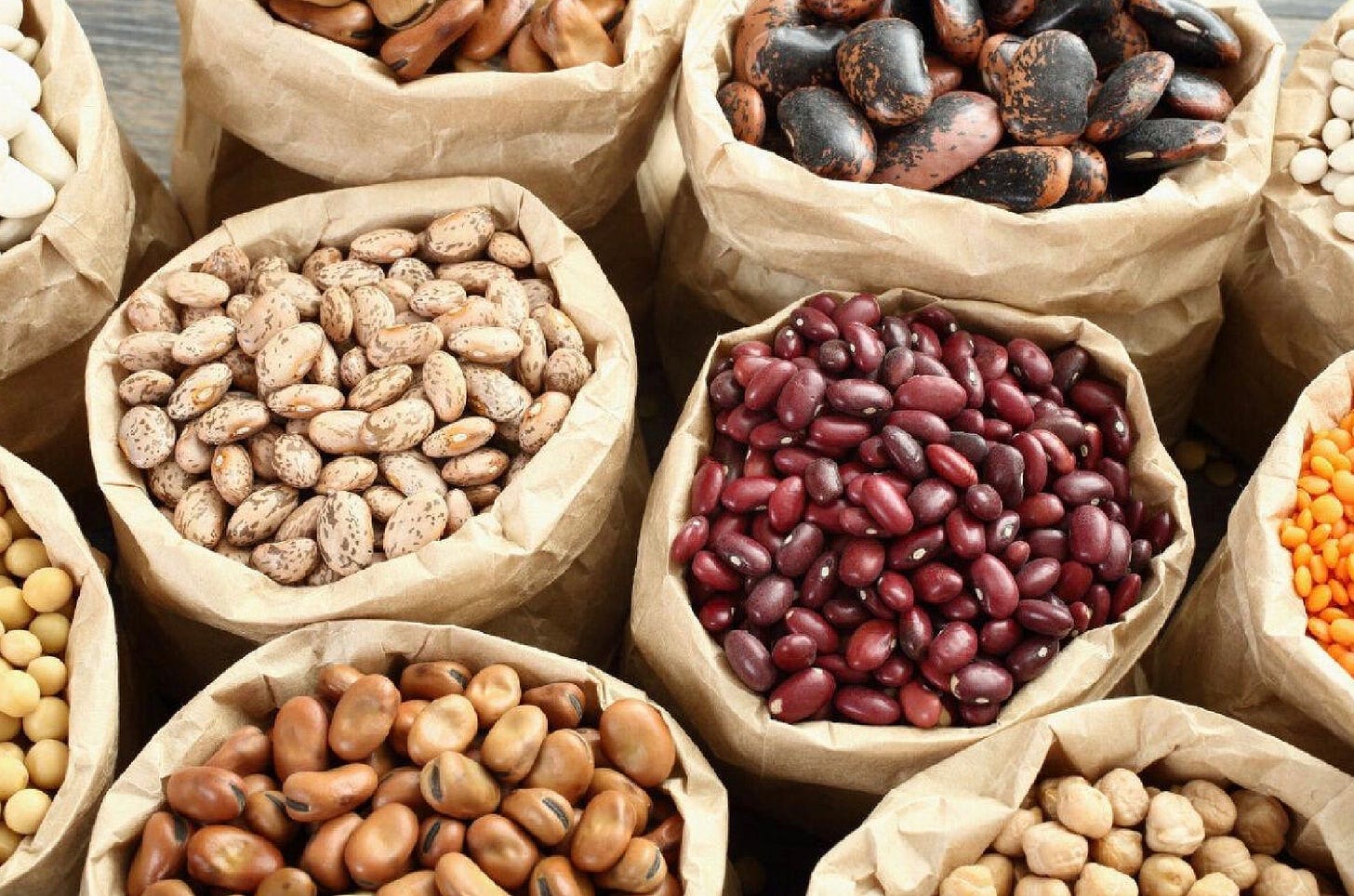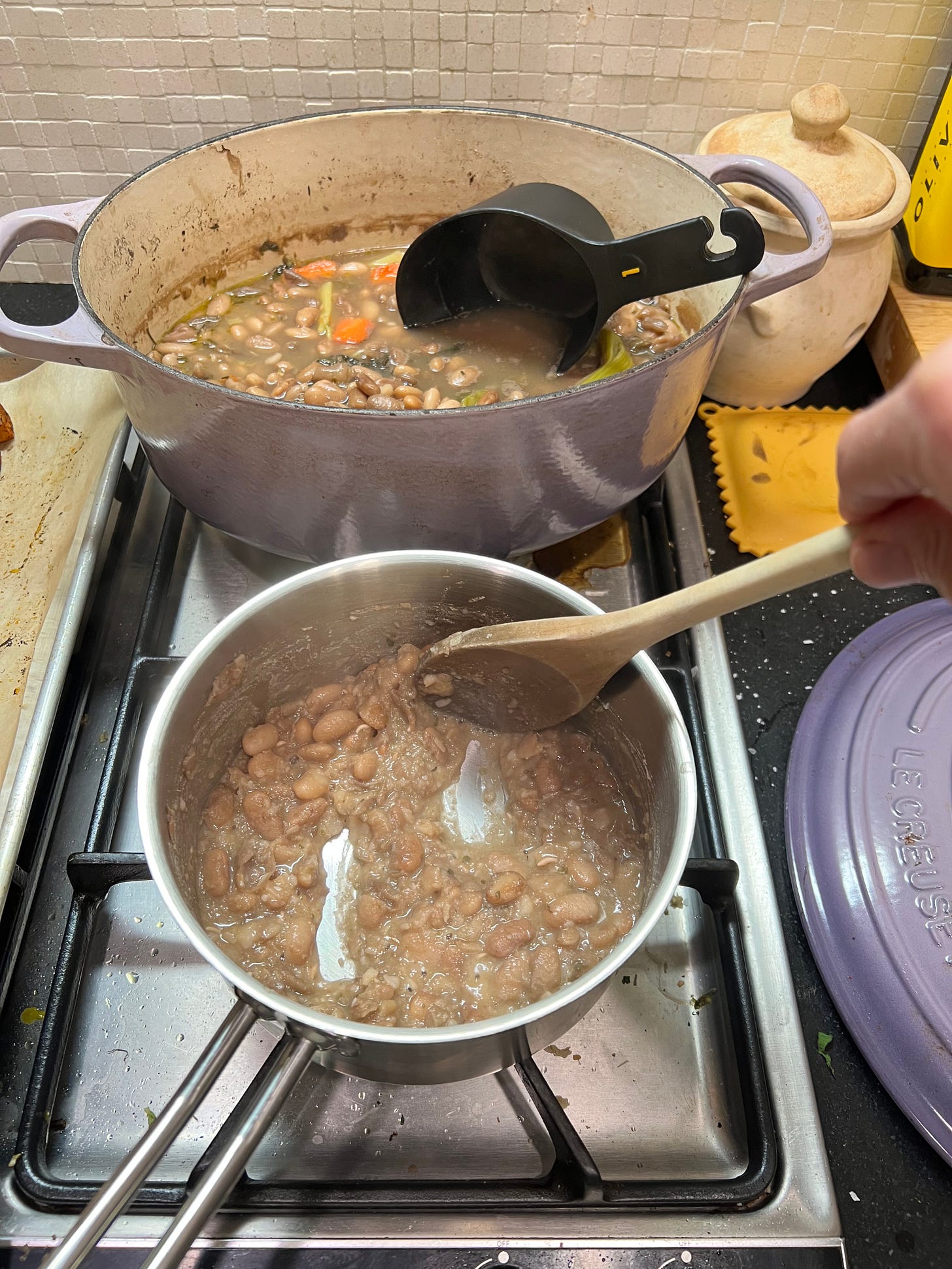We can all use a guide. You know the person, someone, maybe shakily going forth where we have not yet been. Coming back to report on the conditions for the rest of us to do the same thing but with a little direction, a little guidance. There are multiple ways this person becomes the person to do the thing but in the end they did it and have some information to help the rest of us.
What we do not need is a hero, unless we are watching a Marvel movie, a war movie or an action film. In times of great challenge, in real life, heroes are welcome from preventing tragedy, of course, but on a daily basis, we are not looking for a hero, we can be our own hero.
Our lives, including our families, our careers and things we do in our spare time leave little space for researching and having to do all of the work on our own to start something new. We are appreciative to those who have taken a path and are willing to provide information for those of us who would like to follow.
Well what do we do when our guides are saying things that are paradoxical to one another? I have read and I am also viewing information on beans and lectins that would put fear into anyone who is thinking about adding more beans into their diet. I did my own research to put that fear to rest.
The information below is on lectins as it pertains to the consumption of legumes and beans, and how we can ensure to receive the benefits of beans without fearing the unknown. Information is power and I am happy to provide some healthy skepticism. I did not realize lectins were anything in which to be concerned. Feel free to read below on my research and what I know to be true from my own consumption of beans, legumes, pulses...you get it.
What are lectins?
When it comes to dried beans and legumes, lectins are specific proteins found in these plant-based foods. Lectins serve various functions for the plants but can also have implications for human consumption.
Role in plant defense
Dried beans, lentils, peas, and other legumes contain lectins as a natural component of their seeds. These lectins are part of the plant's defense mechanisms, protecting the seeds from being eaten by herbivores and pathogens. Lectins in beans and legumes can interfere with the digestive processes of animals and insects that consume them in their raw state. When ingested, without being soaked and cooked, lectins may bind to the lining of the gut, disrupting nutrient absorption and potentially causing digestive discomfort.
Potential Health Concerns
Some researchers and diet advocates, including Paleo diet enthusiasts and Dr. Steven Gundry, have raised concerns about the potential negative effects of lectins on human health when consumed in significant quantities. It has been suggested that lectins could contribute to digestive issues, such as bloating, gas, or even more severe conditions like leaky gut syndrome. However, the scientific evidence supporting these claims is limited and often controversial. Dr. Gundry, seen on Instagram or Facebook uses his own weightloss success and anecdotal stories, Big Ed, to talk about and write about lectins, suggesting we do not eat foods high in lectins. He is in support of eliminating them and eating a lectin-free diet. I can appreciate that he was able to successfully drop the weight and keep it off. As a medical doctor, specifically a cardiologist, why is he providing information on lectins that scares people yet omitting the full text? He does not include in his informational videos the negative effects from lectins happen when/if the beans are consumed raw. Who is eating these beans raw?
In concert with his info-videos, he sells books, supplements and olive oil which many doctors and nutritionists do. I purchase items online from people I trust as well. He has a practice and his patients I imagine trust him. What I recommend for Dr. Gundry and all people including myself, is to include the complete version of scientific information from studies and then allow the reader to make a choice based on all of the facts. Instead he only includes his anecdotal observations. By using his credentials and the trust people extend to doctors why would he not explain all of the information on lectins? Omitting all of the facts seems dubious.
Reducing lectins/safely eating beans
It's important to note that cooking and processing methods can significantly reduce lectin levels in beans and legumes. Soaking, boiling, and cooking beans thoroughly can break down and deactivate many lectins, making these foods safe for consumption. The National Institute of Health provides an online resource regarding lectins with detailed information located in Table 2 on recommendations on how to best cook dried beans and legumes to remove all lectins. Further, all of the scientific studies I came across had similar recommendations: a diet where we eat a variety of foods, mostly plants and a little lean protein, diverse amount of vegetables, whole grains, beans and fruit to keep our blood sugar balanced and our cardiovascular health in check.
Providing historical context
Beans and legumes have been a staple food in the diets of various human populations for thousands of years. Legumes provided an important source of protein, fiber, and essential nutrients for ancient civilizations, including the Egyptians, Greeks, Romans, and various Middle Eastern, Central American and Asian cultures. They were consumed as a primary protein source or as a complement to other foods like grains and vegetables.
Balanced Diet
Many nutrition experts and health organizations emphasize that beans and legumes are a valuable and nutritious part of a balanced diet. They are rich in protein, dietary fiber, vitamins, minerals, and other health-promoting compounds. Cooking methods and food preparation have evolved to ensure the safe and beneficial consumption of legumes. When I was researching I read that archaeological evidence suggests that they were among the first cultivated crops, dating back to as early as 7,000 to 10,000 years ago. I think we have had enough time to evolve through trial and error. Soak your dried beans overnight, boil them and cook them thoroughly per instructions. If you purchase them in a jar or can it has already been done for you. Of course every individual is different. As some people are allergic to seafood, nuts or other food items, others may not tolerate beans but that would be an outlier.
My advice based upon my experience and cookbooks I have read is: the more beans you eat, the more your gut tolerates and the less gas/bloat you have. Start slowly and build your way up. Your gut will thank you, as will your blood sugar, your hormones and your improved mood and sleep.
You may be interested in reading Harvard’s nutritional newsletter on lectins. At the bottom of the newsletter is a list of further recommended sources for those who seek more studies.
Recommended Recipe
If you read last week, you know I decided to do a 28 day challenge with myself. Yes, party of one. Quick update, my swelling, itchy, hurting joints have all returned to normal. It is unbelievable how quickly it happens. My meals were basic but delicious. I made a big pot of pinto beans and on Friday I made refried beans to use in sweet potato tacos.
That evening I also enjoyed popcorn (no butter) with bittersweet chocolate pieces while watching The Holdovers. Michael and I are watching as many movies that are up for the Oscars as possible. I didn’t reach 10,000 steps each day, it’s been so cold and rainy outside but I have been outside on multiple walks and that is good for my circadian rhythm. I am celebrating all I did last week.
Looking ahead for this week I am continuing with the challenge. I awoke Monday and by midmorning I enjoyed a warm bowl of black bean soup (pretty thick) with an egg over easy on top. Yum. Sunday afternoon, I made a big pot of minestrone soup. The best part is I was inspired by a recipe in the same cookbook (Copyright,1974) that my father-in-law used to make his famous red sauce back in the day. I had a feeling it would be good. There were two different versions, one from Milan and one from Calabria. Both make a “battuto”. A battuto is similar to a mirepoix. I had never heard of a battuto and I am thrilled to use this new Italian culinary term that refers to a finely chopped mixture of aromatic ingredients, typically consisting of onions, carrots, celery, and sometimes garlic or other herbs.
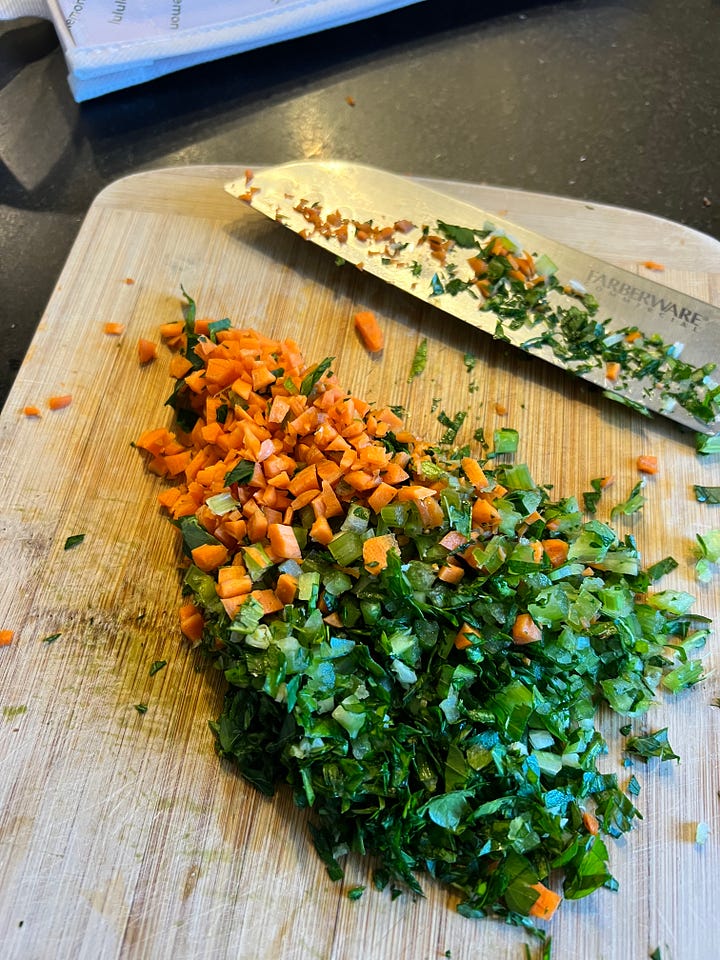
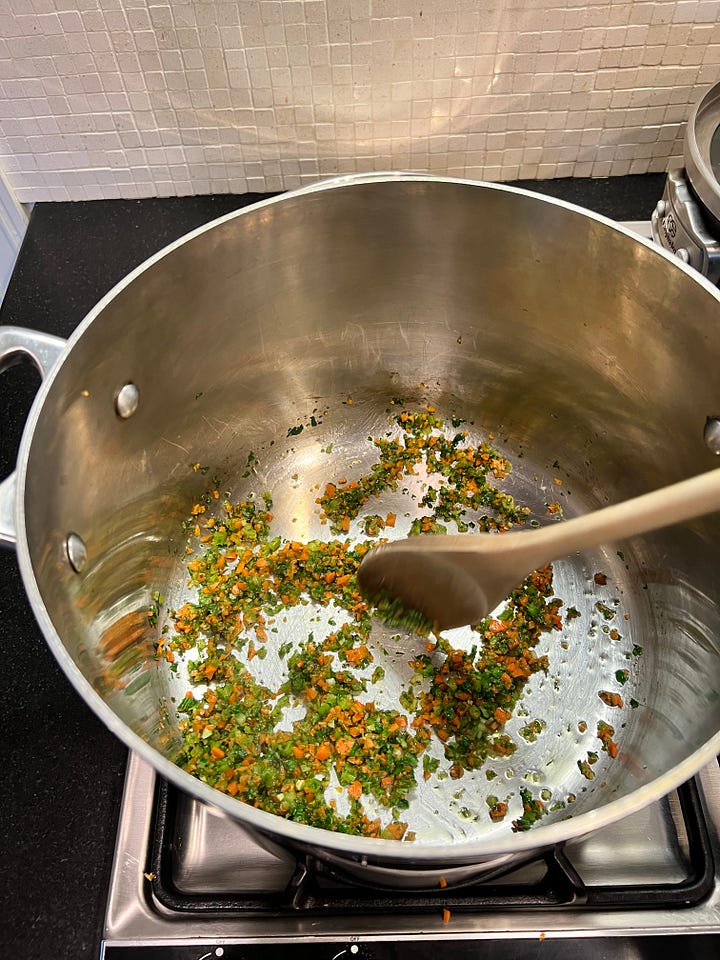
This mixture serves as a flavor base and is used in various Italian soups, stews, sauces, and other dishes to enhance the overall taste and aroma. I merged the two recipes and updated a few ingredients. I used veggies that are in season for the minestrone soup and I did not add lean salt pork to the battuto as they suggested.
Ingredients
For the Batutto—this one did not include onion
Celery stalk including leaves
1 carrot
1 sage leaf
Parsley, enough for two tablespoons once chopped/minced
Garlic clove
3 tablespoons of olive oil-cover the bottom of the soup pot
Soup
2 ½ Quarts hot water (I used 1 quart water and 1 ½ quarts veggie stock I had made and jarred in my fridge)
3 teaspoons salt (I always use less. So do it to your taste)
2 celery stalks
2 carrots
3 potatoes (I had red potatoes, small to medium in size)
1 delicata squash, sliced in half seeds removed, cut no larger than ½ inch. You can leave the skin on or peel.
¼ small cabbage (Unfortunately, I did not have any or I would’ve included in my soup)
1 yellow sweet pepper (not in season but it was in my veggie drawer)
1 cup spinach
1 cup mushrooms of your choice
1 can 28 oz whole peeled tomatoes
1 cup rice or macaroni
½ cup of chickpeas in their liquid
½ cup of kidney and their liquid (My husband is allergic to these beans so I used pinto beans and added a total of two cups because I love beans. I still didn’t think there was enough!)
Some would say optional but I think its necessary 😀
Parmesan cheese for serving
Bread for serving
Directions
Start with the battuto. If my food processor was working I would’ve thrown my battuto ingredients in and pulsed them to a paste. It's not working so I chopped and minced…it was therapeutic. It never got to a paste but did get very fine. If you use prosciutto or salted pork I would not recommend the processor as it will not get to the paste consistency as it does chopping with a knife. Once it is tiny, tiny or pastelike, heat up a big soup pot, saute the battuto in the olive oil until it is golden, approximately 10 minutes over medium. Keep stirring so it does not burn.
Add the hot water, the salt, and raise the heat to high. Add the chopped carrots, celery, potatoes, delicata squash and the yellow peppers. Bring to a boil in the flavored water for 10 minutes. Next, add the mushrooms. If I had cabbage, I would add that, too, at this point.
I added a bit of onion here because I love onion. From now on I will add onion right into the battuto for flavor. While the soup was boiling I opened my can of tomatoes, poured into a bowl and used my kitchen shears to cut the tomatoes into smaller pieces. I could’ve bought the can of diced tomatoes but I prefer to buy the whole tomato and cut myself into larger pieces.
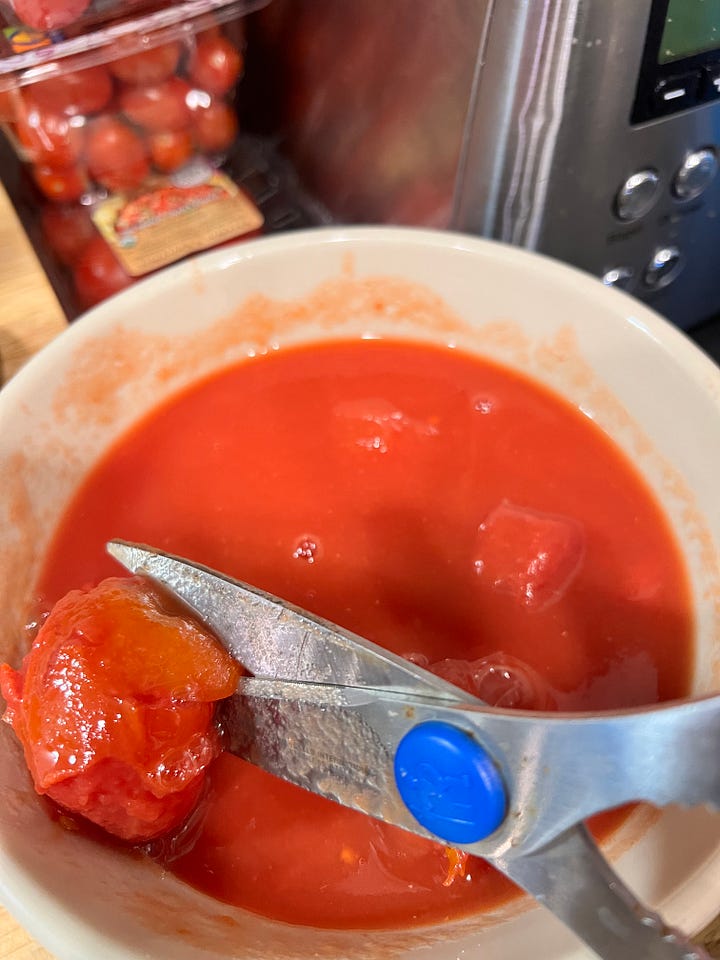
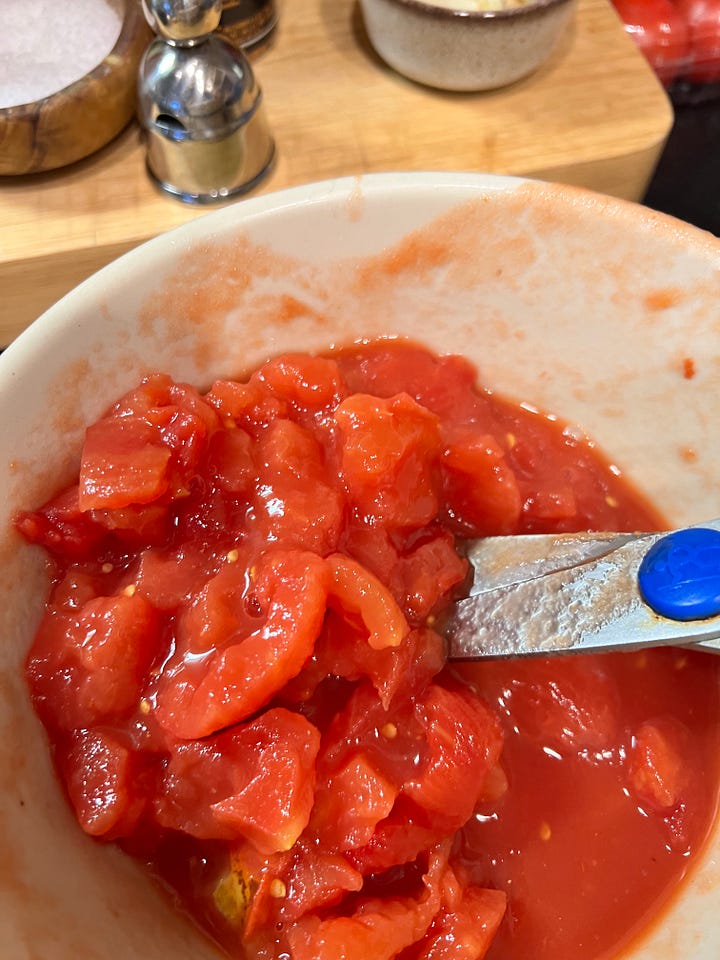
The smaller pieces sometimes disappear in the soup stock. Experiment and find out what you like best. It gives you confidence the next time. Add the tomatoes including the liquid and the beans. If you want a thicker soup, mash some of the beans before you add them. From what I am told the real minestrone soup has a nice, thick consistency. I prefer minestrone thinner and do not mash the beans. Simmer all of the above for 15 minutes. Next, add your spinach or any other greens you prefer. Cook for another 15 minutes or more depending on how you like the consistency. All of the veggies should be cooked.
At this time, most cooks add a cup of small macaroni or a cup of rice right into the pot during the last part of the 15 minutes above. I cook my pasta separately and add it to each portion because I do not like overdone pasta. But when I am cooking for a crowd, in the pot it goes and it is so easy. One pot meal. When the macaroni or rice is fully cooked you are ready to serve. Voila!
Serve with hot, crunchy bread and parmesan cheese. Enjoy! Hint: I like to make it a day ahead. The broth is magical the next day. It will still be delicious on the same day but nothing beats allowing it to rest overnight.
Bean appetito!
Contact
If you have any questions on lectins or integrating beans consistently for gut health now and into the near future, please email me at Denisemancieri1@gmail.com. Feel free to comment below if there are topics you would like to see.
Please share this newsletter with others if you find it may assist them in adding beans to their diet. Or click the heart, below left, so I know you were here. Thank you!
Note: I am not a doctor. I am a teacher and an educator with an earned doctorate in educational leadership. I enjoy research and I can distill large amounts of information into easily understood and digestible pieces allowing people to understand what is happening to their body and possible steps to reverse it with food as medicine. I have healed my own GI issues through choices with food. I followed Karen Hurd’s bean protocol diet, I meditated and still do and I healed. I feel compelled to be in service and educate others as the more people eating beans, alongside a healthy diet and sharing their stories the more people will live a healthier existence. Joy, peace and freedom abound. Please see your doctor and discuss nutritional options before you change any course of action with your health.





